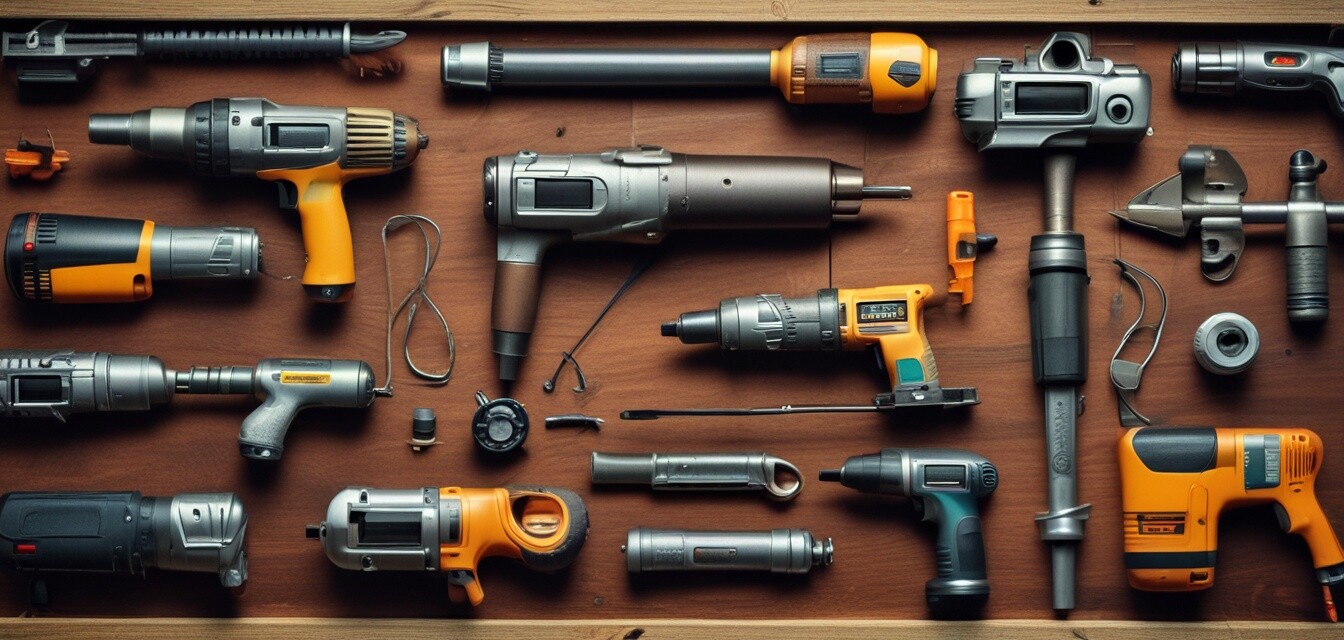
Tips for Buying Used Power Tools
Key Takeaways
- Inspect tools carefully to ensure safety and performance.
- Understand what features matter most in used tools.
- Research prices to get the best deals.
- Ask about the tool’s history and maintain proper communication.
- Check for compatibility with your existing tools and equipment.
Purchasing used power tools can be a smart choice for contractors and DIY enthusiasts looking to save money without sacrificing quality. However, with many options available, it’s crucial to approach your purchase with caution. This guide provides practical advice for ensuring your used tools deliver both safety and performance.
Understanding your needs
Before delving into the world of used power tools, it’s essential to assess your specific needs:
- What types of projects will you be tackling?
- How frequently will you use the tools?
- What features are essential for your tasks?
What to look for when buying used power tools
The following checklist can help you identify the condition and suitability of used power tools:
| Criteria | Details |
|---|---|
| Physical Condition | Look for visible signs of wear, rust, and damage. Ensure all parts are intact. |
| Operational Test | Whenever possible, test the tool to make sure it operates effectively and safely. |
| Brand Reputation | Research the brand and model; some brands continue to perform well even in used condition. |
| Price Comparison | Check the prices of similar used tools online to ensure you’re getting a fair deal. |
| Warranty and Return Policy | Consider tools that come with a warranty or return policy for added peace of mind. |
Common types of used power tools
When shopping for used power tools, keep in mind the following categories:
- Cordless drills - Great for mobility and versatility.
- Impact drivers - Essential for heavy-duty tasks.
- Portable saws - Perfect for on-site cuts and adjustments.
- Multi-tools - Highly versatile for various job needs.
- Sanders - Ideal for finishing touches.
Negotiating the Purchase
When you find a tool you like, here are some tips on negotiating the price:
- Be polite but firm about your budget.
- Use any defects or necessary repairs to justify a lower price.
- Don't hesitate to walk away if the price is not fair.
- Consider making an offer slightly below your maximum budget to allow room for negotiation.
Post-Purchase Considerations
Once you’ve purchased your used power tools, take the following steps to ensure optimal performance:
- Clean and maintain the tools regularly.
- Replace worn-out parts to ensure safety and efficiency.
- Familiarize yourself with the tool's operation through manuals or online resources.
Staying Safe While Using Used Power Tools
Safety should always come first. Here are some fundamental safety tips:
- Always wear appropriate personal protective equipment (PPE).
- Ensure proper training or guidance in using unfamiliar tools.
- Regularly inspect tools before each use, even if they are used.
Tips for beginners
- Start with basic tools and gradually expand your collection.
- Take advantage of forums or communities for tips on brands and models.
- Remember, purchasing tools is an investment in your projects; choose wisely.
Pros
- Significant cost savings when buying used.
- Environmentally friendly by recycling tools.
- Potentially higher-quality tools that are no longer in production.
Cons
- Unknown history of the tool can lead to poor performance.
- Potential safety issues if tools are not maintained.
- Limited return policies on used tools.
Conclusion
Buying used power tools can be a rewarding experience if approached with care and consideration. By following the tips outlined in this guide, you can confidently make informed choices that suit your needs and budget. Always keep safety and performance as your top priority, and ensure you’re getting quality tools that support your projects effectively.
For further reading on effective tool purchasing, check out our Buying Guides for more insightful tips!